New Space Telescope, 40 Times The Power Of Hubble, To Unlock Astronomy’s Future

If you think we’ve seen all there is to see in the Universe, you’re about to have your imagination unlocked.
“Hubble often takes images of distant gravitationally lensed galaxies to infer their substructure and to try to learn about early galaxies in general. For LUVOIR, we would have that same resolution for any galaxy! That’s truly revolutionary.” –John O’Meara
Since humanity first turned our gaze skyward, we’ve realized that the cosmic story of our existence — our origins, all that exists today, and what our ultimate fate is — is literally written across the Universe. Our understanding of what our Universe truly is, what it’s made up of, and how it came to be this way has improved dramatically every time we’ve built better instruments to probe the stars, galaxies, and the depths of space in new ways. The Hubble Space Telescope gave us a huge leap forward, showing us what our Universe looked like; next year, James Webb will give us an equally big leap, showing us how our Universe came to be this way. To take that next giant leap means dreaming big, and seeking to answer the biggest questions astronomy has today. Only LUVOIR, a proposed 15.1-meter space telescope with 40 times the light-gathering power of Hubble, dares humanity to solve those puzzles.

LUVOIR, a concept for a Large UltraViolet, Optical, and InfraRed observatory, would basically be a scaled-up version of Hubble in space, capable of doing the science that was unfathomable a generation ago. That’s not to belittle Hubble’s accomplishments at all! Consider what Hubble has given us: a revolution in cosmology, a revolution in our understanding of galaxies and their building blocks, a keen eye on our dynamic Solar System, and our first steps into the study of exoplanetary atmospheres. At 15.1 meters, with a segmented design, instrumental capabilities far outstripping what we have today, superior resolution, and so much more, LUVOIR would represent not an incremental improvement, but a transformative one, over anything not only in existence, but over any observatory ever proposed.

I spoke with John O’Meara, the lead of Cosmic Origins Science for LUVOIR, about a wide variety of topics related to this proposed telescope. In every astronomical arena you can imagine — from the Solar System to exoplanets, stars, galaxies, intergalactic gas, dark matter and more — a telescope this advanced would push our scientific knowledge forward in a way nothing else ever has. Going so much larger, combined with the other advanced technology that will be aboard LUVOIR, makes this truly the astronomer’s dream observatory. Compared with what we can do today, here’s a look at six things a giant space telescope like this would allow us to learn.
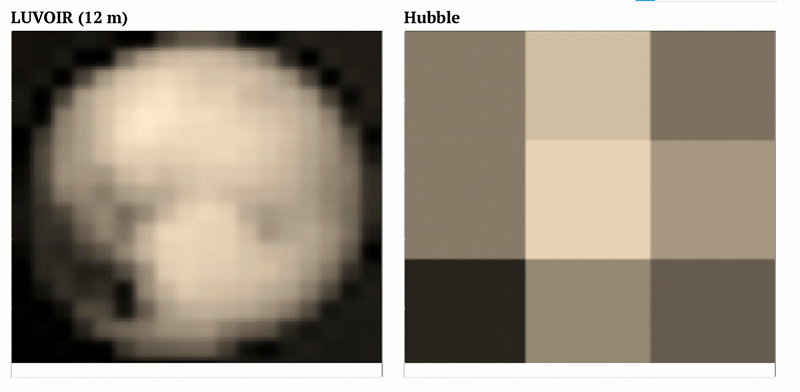
Solar System — Imagine what it would be like to directly image geysers on Europa and Enceladus, eruptions on Io, or to map out the magnetic fields of the gas giants from right here, near our own world? Imagine looking out at a distant world in the Kuiper belt, and not just getting a single pixel of light to extrapolate from, but to take an image of the world itself and be able to discern surface features? That’s the promise of a 10-or-more-meter space telescope, which should not only be able to take incredible images of these worlds, but to obtain spectra of a huge variety of features on them.
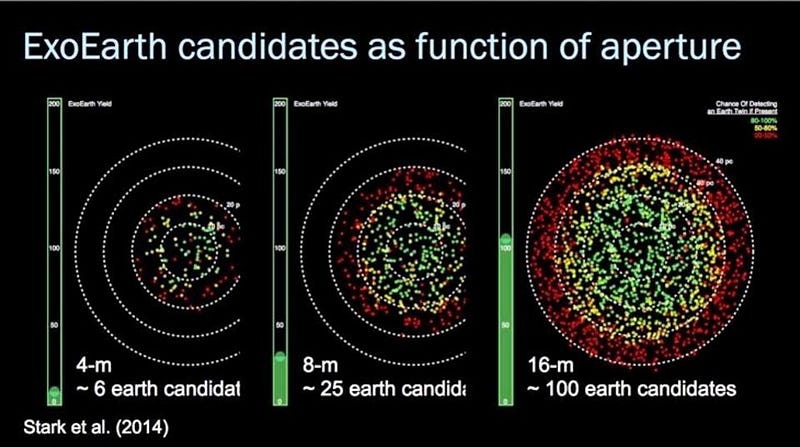
Exoplanets — Instead of inferring the existence of planets from their transits or the wobbles they cause in the orbits of their parent stars, LUVOIR will have the capability to image a great many of them directly. With a coronagraph of unprecedented quality, coupled with its one-of-a-kind size and location in space, it should be able to find and image hundreds of star systems for candidate exoplanets with the potential for life on them: all the stars within about 100 light years. With the spectra it will obtain, LUVOIR can do what no other current or planned observatory will be able to: search for molecular biosignatures around hundreds of Earth-sized, potentially habitable worlds. For the first time, it could give us evidence of life beyond our own solar system.

Stars — When the Hubble Space Telescope was launched, it opened up a fascinating possibility to observational astronomers: the capability of measuring the properties of individual stars in the Andromeda galaxy, more than 2 million light years away. With LUVOIR, we’ll be able to make those same measurements for every galaxy within about 300 million light years! For the first time, we’ll be able to measure stars in every type of galaxy in the Universe, from dwarfs to spirals to giant ellipticals to the rare ring galaxy to galaxies in the active process of merging. This cosmic census would be impossible without a large, optical space telescope like this.
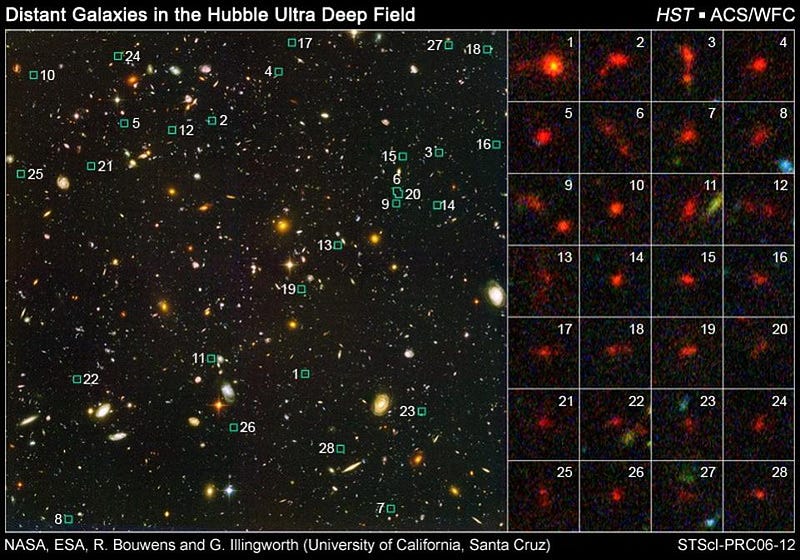
Galaxies — Hubble, quite remarkably, has been able to find galaxies from when the Universe was only 400 million years old: just 3% of its current age. But galaxies this distant are rare, since Hubble can only see the brightest ones among them, and even at that, the ones that are aided by having gravitational lenses in the foreground. By contrast, LUVOIR will be able to see every galaxy, including the faint ones, the dwarf ones, the tiny building blocks of modern galaxies, and the ones that don’t have gravitational lenses or serendipitous alignments at all. We will finally be able to learn about the full population of galaxies in the Universe, and to measure them to resolutions of just 300–400 light years per pixel, no matter how distant they are in the Universe.
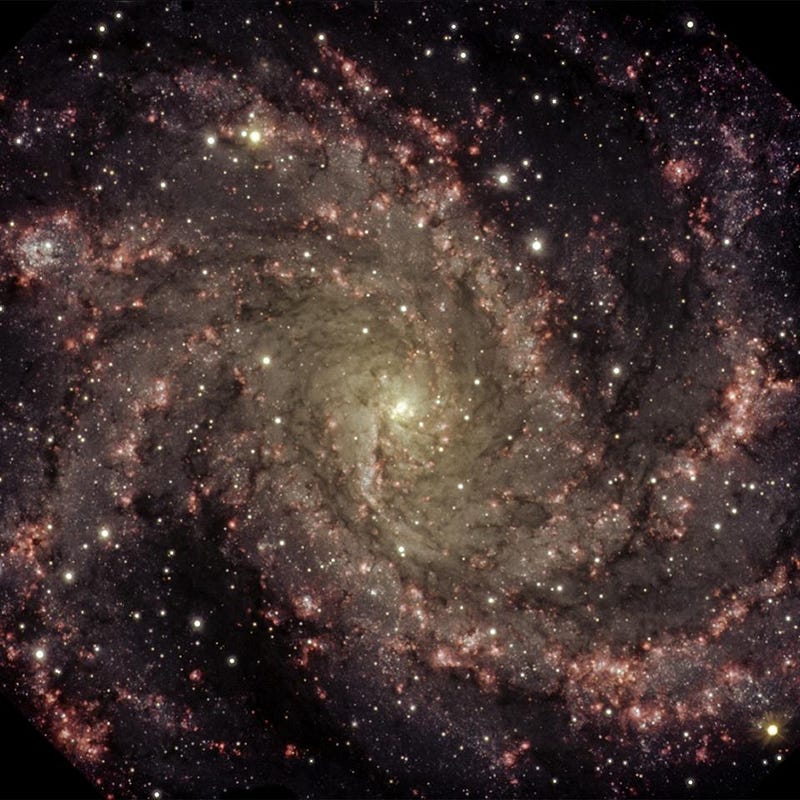
Intergalactic gas — Today, we can take a “pencil beam” of a galaxy, measuring the halo of gas surrounding a galaxy and serving as its fuel tank and recycling center. We can measure the absorption features of this gas, and compare it with the best 3D simulations our theory and technology can offer. But with LUVOIR, we can directly image dozens or even hundreds of “pencil beams” per galaxy, measuring and mapping out the circumgalactic medium for any galaxy at all. We can even, in some cases, directly image the emission properties of the excited gas, allowing us to directly compare our observations with the simulations, without having to do the interpolation necessary in absorption alone.

Dark matter — This invisible, transparent mass is responsible for the majority of gravitation in the Universe, yet we can only map it out from its effects on visible matter. In the past, this has meant looking at bulk properties of large areas of distant galaxies, with the Milky Way, from our vantage point within it, being one of the most difficult galaxies to map. LUVOIR will change all of that, allowing us to measure the rotation properties of galaxies more distant than ever before, testing whether and how the dark matter profile of galaxies has evolved over billions of years. We’ll be able to test models of dark matter explicitly, by measuring the proper motions of Milky Way stars to never-before-achieved precision, and by analyzing the smallest building blocks of galaxies that are currently beyond even the world’s most powerful telescopes.
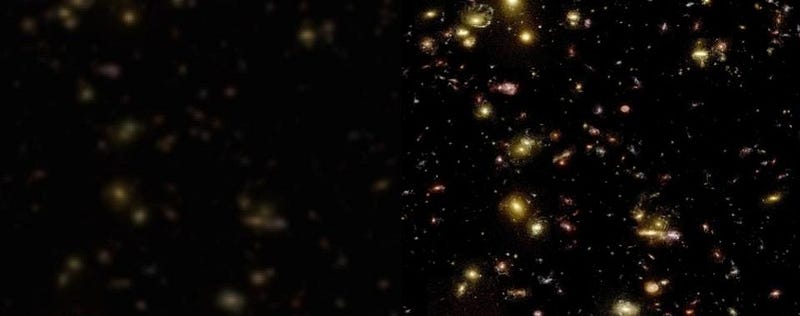
There’s no substitute for being in space; no matter how good adaptive optics get, you’ll never be able to overcome 100% of the atmosphere’s effects. This is particularly true in the ultraviolet, and at many infrared wavelengths, which can really be only imaged accurately from space, due to atmospheric absorption at those wavelengths. There’s also no substitute for size, which determines both the maximum resolution you can achieve and the amount of light-gathering power you have. Across the board, LUVOIR will be capable of better than six times the resolution of Hubble and of taking images to the same depth approximately 40 times faster. What LUVOIR could see with nine days of continuous observations would take Hubble an entire year, and still Hubble would only have 16% as good resolution.
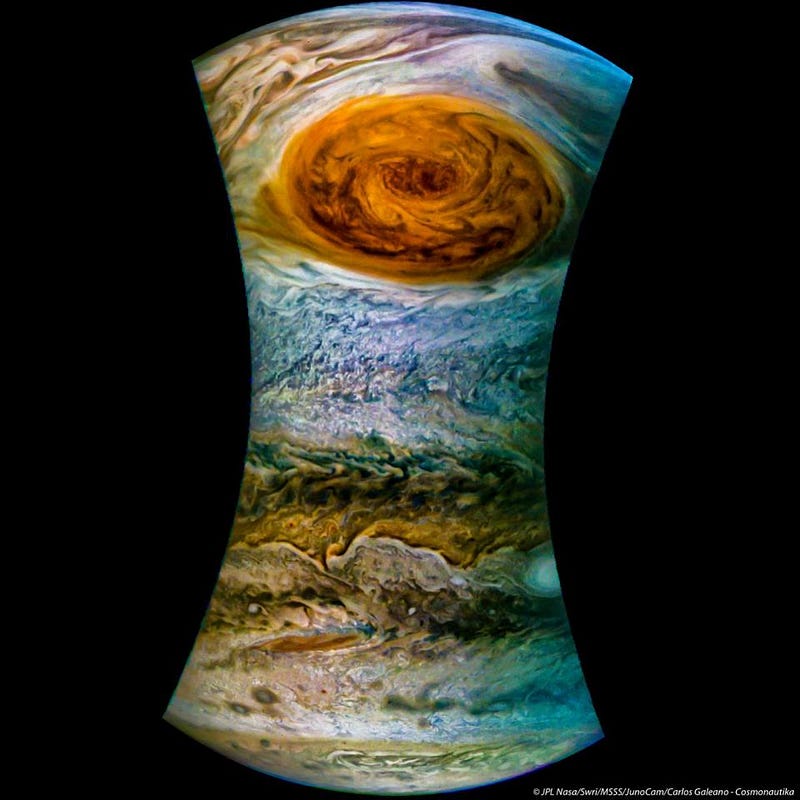
As good as JUNO’s images are of Jupiter, LUVOIR will be able to get those images from its vantage point in orbit near Earth, rather than having to fly a spacecraft to a distant planet. When it comes to measuring the ultraviolet light from a source, LUVOIR will use a microshutter array on its spectroscopic instrument, allowing it to image many objects simultaneously, rather than just a single object at a time like today’s telescopes. And just like Hubble works with today’s largest ground-based observatories, LUVOIR will work with the current generation of under-construction 30-meter-class observatories, like GMT and ELT, to discover and follow-up on the faintest, most distant objects that humanity will ever know. While James Webb will be NASA’s flagship astrophysics mission of the 2010s and WFIRST will fly in the 2020s, LUVOIR could come to be as early as the 2030s, depending on how the upcoming decadal survey goes.
But these potential discoveries are what we know we’re going to be looking for. With every new major technological leap forward we’ve ever taken in astronomy and astrophysics, the greatest achievements of all have been the ones we could not have anticipated in advance. The great unknowns of the Universe, including what it looks like in the faintest regimes, how the most distant stars, galaxies, gas clouds, and the intergalactic medium behaved at early times, and what it looks like beyond anything we’ve ever seen will all be exposed for the first time. It’s possible that we’ll learn we were quite arrogant and wrongheaded in a great multitude of arenas, but we’ll need this new, high-quality data to show us the way.

In order for LUVOIR to work, we’ll need to use the largest, heaviest-design launch vehicle capable: NASA’s Space Launch System. We’ll need the segmented mirrors to achieve picometer-level stability; more than 10 times better than the stability we achieve today. To perform the exoplanet imaging, we’ll need a coronagraph that can pick out 1-part-in-10,000,000,000, a huge improvement over today’s best systems. The mirror and mirror-coating systems will demand improved technology over today’s best. And most ambitiously, we’ll need the capability to service this telescope at the L2 Lagrange point: 1.5 million kilometers away from Earth, which is four times as far as the most distant human has ever flown from our world. And as far as why we need this, I think John said it best in his own words:
I believe very strongly that LUVOIR is a critical part of our next great era in science when we definitively advance not just the search for life, but the telling of its story over cosmological time. LUVOIR can give us the tools to answer many of our most fundamental questions as human beings trying to understand their place in the universe. If that isn’t worth it, what is?
Ethan Siegel is the author of Beyond the Galaxy and Treknology. You can pre-order his third book, currently in development: the Encyclopaedia Cosmologica.





